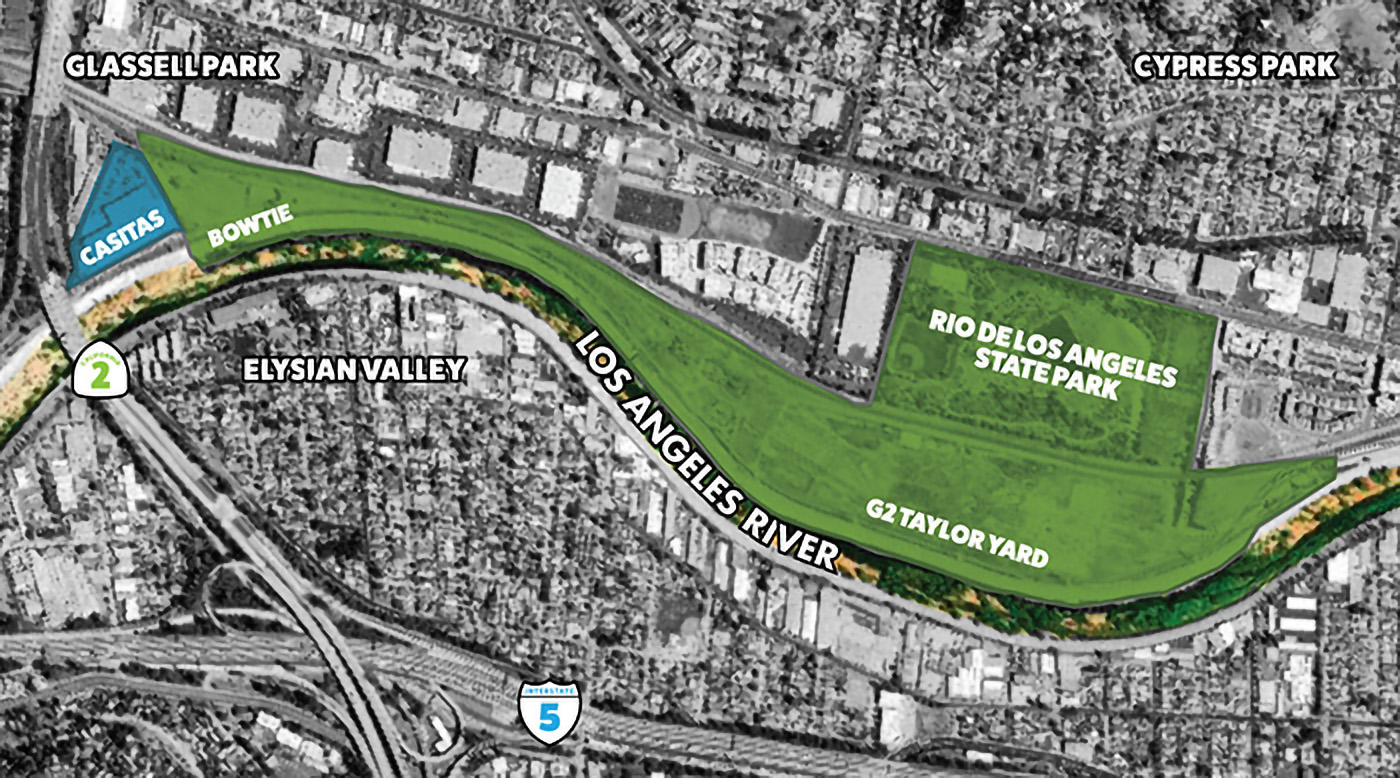Also available in Chinese, Korean, and Spanish.
An overwhelming majority of Angelenos (91%) support the revitalization efforts of the 51 miles of the Los Angeles River, even though fewer than half of them have ever visited it. This is one of the most important findings in a multilingual public opinion survey of more than 600 Los Angeles County residents in the four predominant languages of their neighborhoods: English, Spanish, Chinese and Korean.
“When we started thinking and reimagining what a post-pandemic city is going to look like, the river should be up front,” said Fernando Guerra, Founding Director of the Center for the Study of Los Angeles at Loyola Marymount University, which along with the Laboratory for Environmental Narrative Strategies at UCLA, and Ethnic Media Services conducted the survey.
“We need to be outside, we need to have activities in the urban space, and thinking of a revitalized river is a great support for this effort,” he added.
Representatives from more than 10 governmental and non-governmental organizations gathered in Los Angeles to discuss the environmental and community perspectives of the LA County’s Master Plan to restore the river, as well as the significance of the widespread support of all races and ethnicities to this initiative.
“For those who live along the (river) corridor to continue to benefit, we have to tackle several issues,” said Mark Stanley, Executive Officer of Rivers and Mountains Conservancy. “How do you look at encampment issues, how do you look at housing, how to integrate that into the open space, how do you look at the communities that want to create greater economic development, without creating displacement and gentrification?”

Angelenos believe that creating habitats for plants and animals and capturing stormwater for future use before it reaches the ocean should be a high priority, as well as flood control, which ensures that residents are not displaced by the new use of the land.
For Belen Bernal, Executive Director of Nature for All, who grew up with her family next to the river, and as mayor of South Gate represented a community heavily affected by pollution and the lack of spaces for recreation, “it’s really important to look at history and see what we can learn to remap a space that is needed for everyone.”
The survey also found that a large majority of residents across the county would like to see more bike and pedestrian trails, parks, and access points on the river. 64% believe that the river could become a world-class attraction, like the rivers in San Antonio, Seoul, and Madrid. This is a viable goal given that since 2010, the Environmental Protection Agency deemed the Los Angeles River a navigable waterway.
“What has been a singular purpose (in revitalization) is to get water out quickly because of atmospheric flooding,” said Sarah Rascon, Environmental Equity Officer of the Mountains Recreation and Conservation Authority. “But with this renewed focus, we realize that you can do so much more… The water quality is tested three times a week now, there is recreation for everyone,” she added.
These new uses are covered in a 480-page Master Plan commissioned by the LA County Board of Supervisors, which seeks to transform 32 miles of concrete-lined river into public green spaces, and is the result of a five-year disclosure process after dozens of community meetings. The state of California has committed $54 million for river restoration projects, including LA River.
Although only one in five residents is aware of the new Master Plan, this is an “incredible number” for Anthony Rendon, Speaker of the California State Assembly, who believes the county’s efforts to publicize the plan “have paid off.”
“I also think it is good to have an open conversation about the uneven development along the river,” Rendon said, referring to the efforts that have historically been made along the upper river, and that only in recent years have focused on the lower river. “I want to thank the residents of the lower river communities who have gone out of their way to talk about their communal renderings and their visions of what they want the river to look like.”
Thanks to this push, the county made an investment of $45 million to create a Cultural Art Center in the city of South Gate.
“Master plans are sort of imposing one vision on a river that goes through all the diverse neighborhoods,” said Max Podemski, Planning Director for Nury Martinez, President of the LA City Council, referring to the inhabitants of the riverbanks, who mostly belong to low-income communities of color.
“This really presents an opportunity to re-envision this sort of single-use infrastructure as a multi-benefit, where these tributaries can be revitalized in a way that reflects those communities and I think that is also a way to combat gentrification.”
Miguel Luna, President of the NGO Urban Semillas, grew up close to the river and said that for him and his family it “was our church every Sunday”. Since his childhood he has built a “relationship” with the river that “it has given me so much”, so he believes that the Master Plan will “perhaps provide people that opportunity to reconnect, or learn about why that relationship is so important”.
The press conference was moderated by Jon Christensen from the UCLA Luskin Center, Innovation & Institute, Environment & Sustainability and included the participation of other stakeholders such as Tensho Takemori, architectural designer with Ghery Partners, Damon Nagami, Senior Attorney at the Natural Resources Defense Council, and Rudy Ortega, Jr., Tribal President of the Fernandeno Tataviam Band of Mission Indians, who dedicated a song to the historic river.



